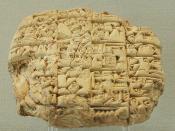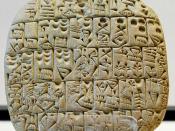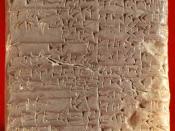Sumerian Lexicon, Version 3.0 1
Sumerian Lexicon Version 3.0
by
John A. Halloran
The following lexicon contains 1,255 Sumerian logogram words and 2,511 Sumerian compound words. A logogram is a reading of a cuneiform sign which represents a word in the spoken language. Sumerian scribes invented the practice of writing in cuneiform on clay tablets sometime around 3400 B.C. in the Uruk/Warka region of southern Iraq. The language that they spoke, Sumerian, is known to us through a large body of texts and through bilingual cuneiform dictionaries of Sumerian and Akkadian, the language of their Semitic successors, to which Sumerian is not related. These bilingual dictionaries date from the Old Babylonian period (1800-1600 B.C.), by which time Sumerian had ceased to be spoken, except by the scribes. The earliest and most important words in Sumerian had their own cuneiform signs, whose origins were pictographic, making an initial repertoire of about a thousand signs or logograms. Beyond these words, two-thirds of this lexicon now consists of words that are transparent compounds of separate logogram words. I have greatly expanded the section containing compounds in this version, but I know that many more compound words could be added.
Many cuneiform signs can be pronounced in more than one way and often two or more signs share the same pronunciation, in which case it is necessary to indicate in the transliteration which cuneiform sign is meant; Assyriologists have developed a system whereby the second homophone is marked by an acute accent (´), the third homophone by a grave accent (`), and the remainder by subscript numerals. [If the small font size prevents you from seeing whether the accent is acute or grave, click on View and Zoom and scroll up to 125%.] The homophone numeration here follows the 'BCE-System' developed by Borger, Civil,


